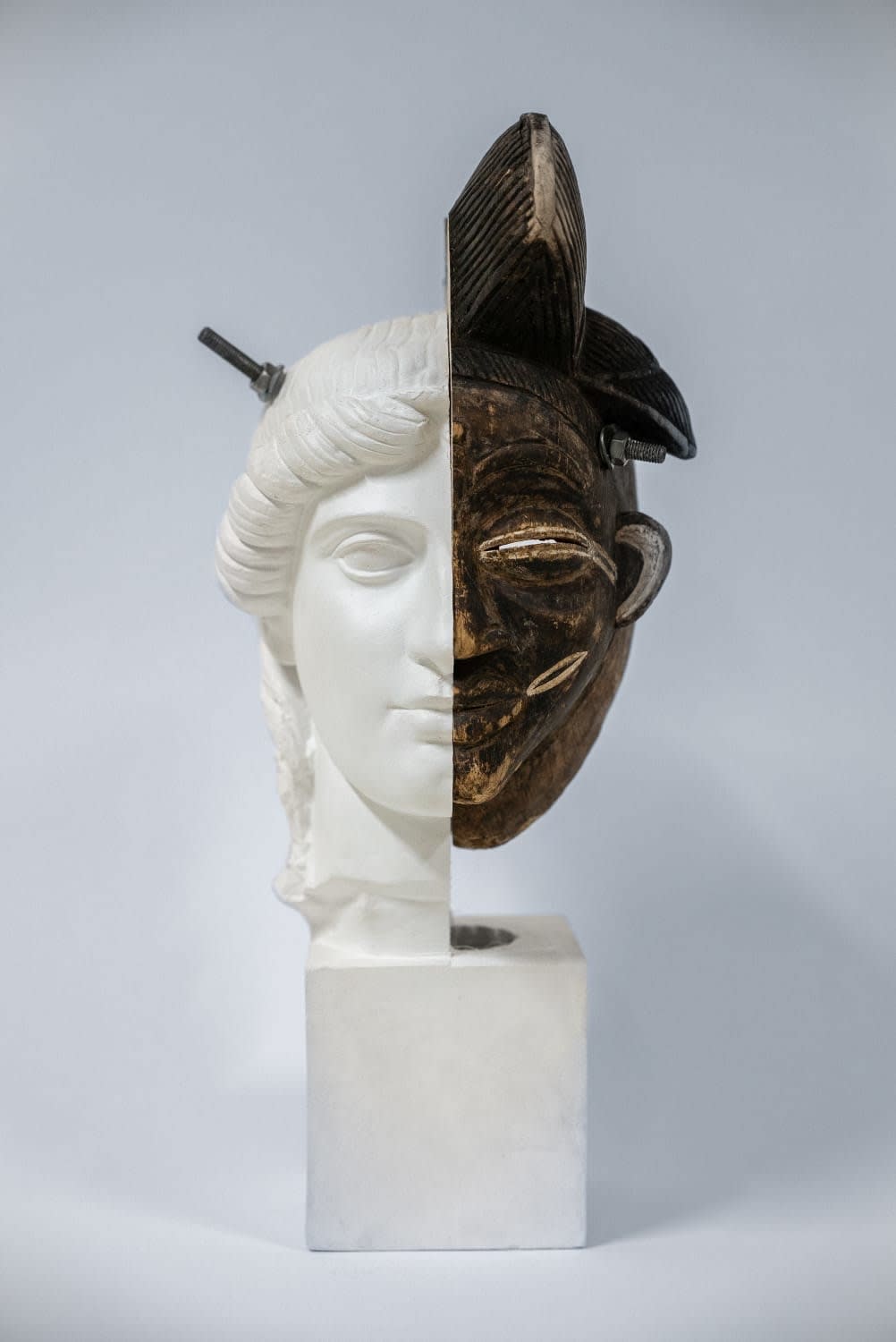
Nidhal Chamekh Tunisian, b. 1985
18.50h x 7.87w x 8.27d in
The Frictions series begins with a detail from the installation The King and the Mask (2024), part of Chamekh’s latest solo exhibition, Et Si Carthage?. The ivory mask, placed to the left of the body, is adorned with a fragment of Roman sculpture that extends its features, creating a figure at once hybrid and amorphous, and yet forming a physiognomic whole that feels strangely familiar. The assemblages in Frictions restage this process across multiple variations, consistently bringing together two key elements: Greco-Roman sculpture and the African “mask.” At times, carved wooden sections join sculpted heads; at others, fragments of statuary are affixed to wooden objects, shaped and patinated by hand.
From these encounters arise dissonant variations, frictions in the sense described by Édouard Glissant[1]. The works strain inherited taxonomies: white sculptures and Black masks — the former housed in archaeological museums; the latter relegated to ethnographic collections. Clean cuts through wood or marble heighten the feeling of a forced, discordant union. Yet continuities emerge: features flow from one fragment to another, sometimes mirroring each other, unsettling the cultural register that elevates some forms as artistic models while dismissing others as “naïve art.” In doing so, the work challenges anatomical rationality and seeks to break free from a coercive representational system.
The first Frictions assemblage was made from fragments unused in earlier installations. It features the head of Roman emperor Caracalla, a copy of the Farnese bust likely carved around 212 CE, found in the Baths of Caracalla and now at the National Archaeological Museum of Naples. The mask is likely a replica of a Dan wooden sculpture from Ivory Coast. In the same year, Caracalla issued the Constitutio Antoniniana, granting Roman citizenship to all free men in the Empire, marking a major milestone in Roman history. Fascist historiography later cast this edict as Rome’s downfall, giving citizenship to all conquered peoples, claiming it enabled the rise of a “lower race” and promoted miscegenation, seen as a source of physical and moral decay. The first issue of La Difesa della Razza (1938) exemplifies this: with a photo of Caracalla’s bust facing Augustus's bears the caption, “The somatic traits of the semi-barbarian Caracalla sufficiently illustrate the main motive of his ruinous edict.” This contrast reflects fascist beliefs that physical appearance reveals moral character: Caracalla, the “hot-tempered and bloodthirsty foreigner,” embodies decay; Augustus, balance and grandeur. Such interpretations of antiquity continue to shape contemporary debates in art, scholarship, and especially popular culture. Ridley Scott’s recent Gladiator II illustrates this: its Venetian-blond Caracalla, stripped of his African heritage, perpetuates myths about Africa and the so-called “good” Roman emperors.
[1] While Glissant primarily addresses the Creole cultures of the Caribbean, his notion of creolization extends further: a broader dynamic of formation and (re)birth born of cultural encounters — composite cultures that can only be voiced through the multiplicity of their origins.